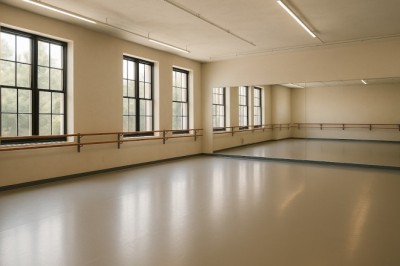
views
Meet Nikolay Tsiskaridze
In a deeply personal and insightful video, principal dancer Nikolay Tsiskaridze reflects on his extraordinary journey in ballet and offers a critical perspective on the art form's current state. His reflections span from his unexpected rise to prominence to his concerns about the future of ballet, revealing a profound understanding of the discipline and an unwavering commitment to its preservation.
An Unexpected Journey
Tsiskaridze begins by sharing a poignant childhood memory that ignited his passion for ballet. He recalls the first time he visited a theater, where he dreamed of one day dancing on stage. This dream was especially significant as Tsiskaridze did not come from a family of artists; instead, his extraordinary talent was discovered through a chance encounter. Despite the odds, he ascended to the top of the ballet world, a journey marked by deep gratitude for the guidance he received from some of the greatest teachers in the Soviet Union.
However, Tsiskaridze is quick to emphasize that maintaining a prominent position in ballet is far more challenging than achieving it. His performances often sparked polarized reactions, a testament to the emotional intensity and true artistry he brought to the stage. For Tsiskaridze, genuine artistic expression is meant to provoke strong reactions, even if it leads to debates among audiences.
The Burden of Expectations
Living up to the high expectations set for him was a constant struggle. Tsiskaridze acknowledges the immense pressure of sustaining a career under the spotlight, where every performance is scrutinized. Beyond personal challenges, he expresses concern for the younger generation of dancers, criticizing the decline in cultural education. He advocates for a more comprehensive understanding of art and literature, emphasizing that a well-rounded education is crucial for true artistic depth.
Tsiskaridze is particularly frustrated with dancers who lack awareness of the historical and emotional contexts of the roles they perform. He underscores the importance of continuous learning and self-improvement, revealing his commitment to fostering a more educated approach to ballet among his peers. For him, being a well-rounded individual who deeply understands the art form is essential to preserving the richness and integrity of ballet.
The Evolution of Ballet
Tsiskaridze then shifts his focus to the current state of ballet, offering a critical analysis of how the art form has evolved over the years. He expresses a deep longing for the depth and intelligence that once characterized ballet performances, lamenting that many contemporary productions lack the originality and complexity that defined the golden age of ballet.
Drawing a distinction between classical ballet and modern dance, Tsiskaridze acknowledges that while modern dance is a legitimate discipline, it differs significantly from classical ballet, which is deeply rooted in tradition and requires extensive training. He nostalgically recalls the 1960s, the golden age of ballet, when Russian ballet gained international acclaim for its unmatched excellence. Tsiskaridze emphasizes that no other country offers the same level of classical training or invests as deeply in ballet education as Russia does, a factor that has played a crucial role in the country’s dominance in the art.
Reflecting on his career, Tsiskaridze shares how he had late opportunities to explore different styles and how influential figures like Rolan Petit shaped his artistic journey. He critiques the current generation of choreographers, arguing that many of them fail to create compelling narratives within ballet, leading to a decline in the quality and depth of performances. This, he believes, has contributed to a broader cultural shift away from the rich storytelling that once defined the art form.
The Impact of Modernity on Ballet
Tsiskaridze also voices concerns about the impact of the internet and modern technology on the arts. He suggests that the digital age has led to a dilution of creativity and a rise in commercialism, both of which have negatively affected the quality of ballet. While he acknowledges that there are still many talented performers, he argues that the art form itself has suffered, becoming more accessible but also less valuable in terms of its artistic integrity.
A Call to Preserve Ballet's Rich Legacy
In conclusion, Tsiskaridze conveys a profound sense of nostalgia for the artistry and storytelling that once defined ballet. He emphasizes the importance of maintaining a unique artistic voice, rather than merely replicating athletic feats. For Tsiskaridze, true art requires a distinct perspective and emotional depth that goes beyond technical skill—a message that resonates deeply with his commitment to preserving the rich legacy of ballet for future generations. Through his reflections, Tsiskaridze offers not just a glimpse into his personal journey but also a call to action for the ballet community to return to the values that once made the art form so profound and intellectually stimulating.




















Comments
0 comment